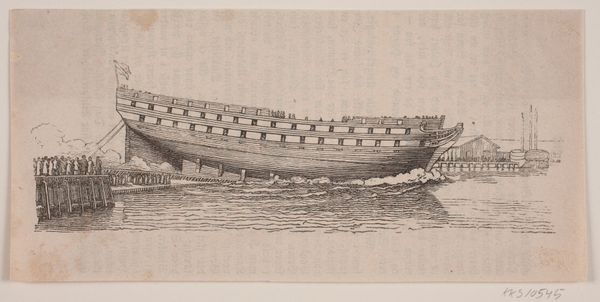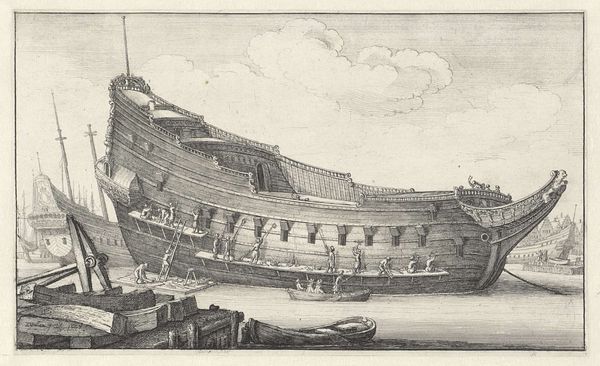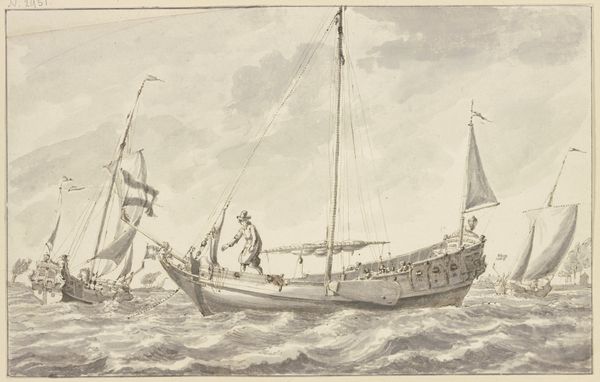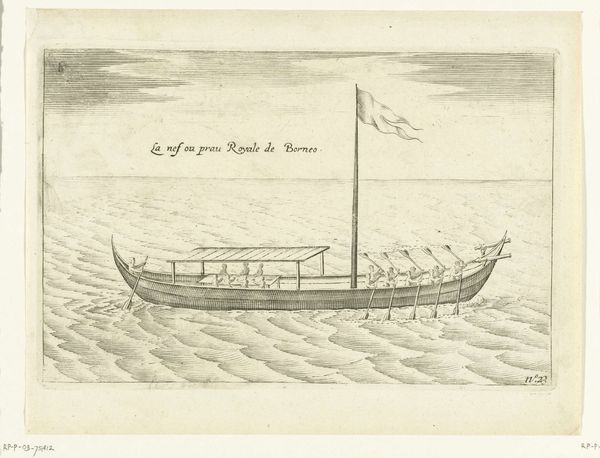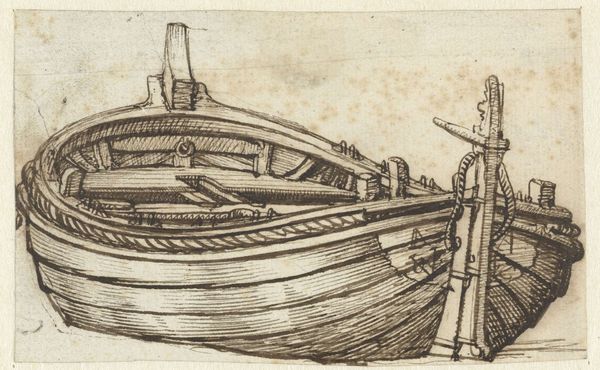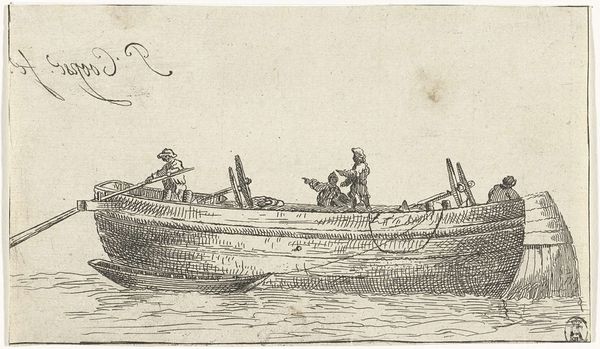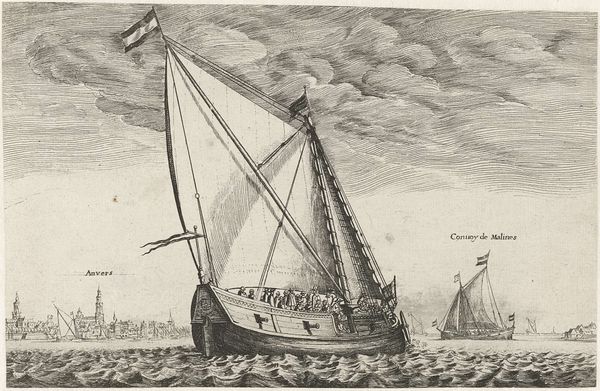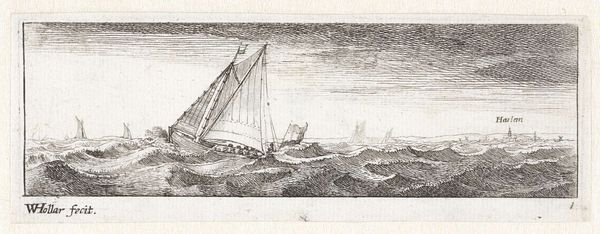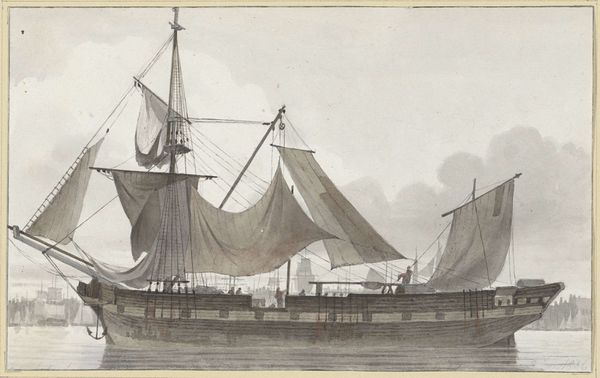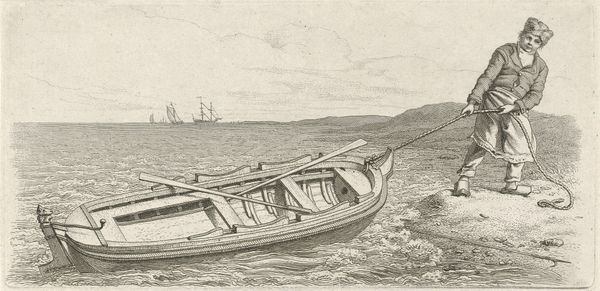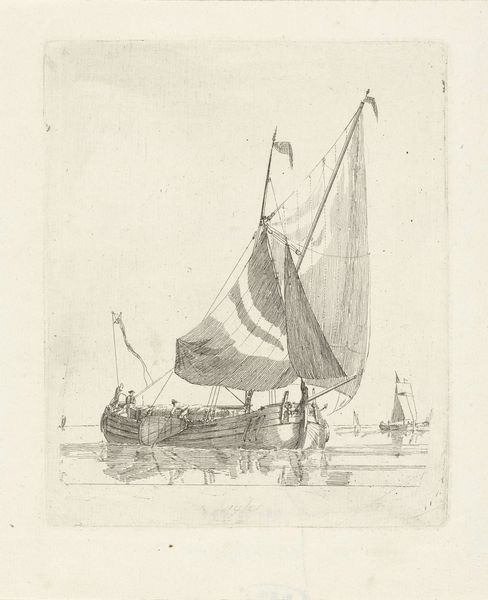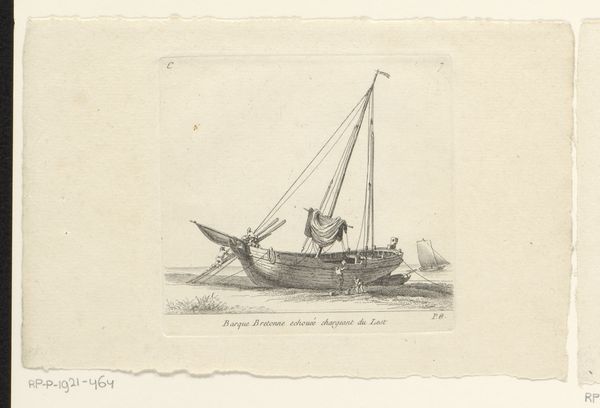
drawing, paper, ink
#
drawing
#
landscape
#
paper
#
ink
#
genre-painting
Dimensions: height 104 mm, width 245 mm
Copyright: Rijks Museum: Open Domain
Editor: Here we have Hendrik de Leth’s “Het vliegend vaartuig Volgh My,” a drawing in ink on paper from 1743. It features this almost whimsical vessel on the water, like a floating house. It’s intriguing, but I'm not quite sure how to interpret it. What do you see in this piece? Curator: I see a reflection of 18th-century Dutch society, deeply intertwined with its waterways and its class structures. These kinds of "flying vessels," or pleasure barges, were status symbols, a privilege enjoyed by the wealthy elite. Editor: So, it's more than just a charming landscape. It speaks to social dynamics? Curator: Absolutely. The name itself, "Follow Me," is telling, don't you think? It hints at the power dynamics at play. Who is issuing the command? To whom? These barges served as stages for performing wealth and authority. They were often sumptuously decorated, showcasing the owner's taste and financial standing. Consider how such displays may contrast with the living conditions of the working class at the time. Editor: That's fascinating! I hadn’t considered the name. The decorative element now reads so differently. Does the artist's choice to depict this particular subject also hold significance? Curator: Definitely. By choosing this subject, De Leth engages in a dialogue about the social landscape of his time. Is he celebrating this opulence, or subtly critiquing it? It’s not always easy to discern a direct judgment, but it does offer space for the audience to reflect critically. Where do you see yourself in this depiction? Editor: I see what you mean. It's a lens through which we can examine issues of privilege and representation, then and now. Thank you, that really gave me a lot to think about! Curator: Indeed. Art serves as a powerful mirror, reflecting not only our present but also the complexities of our past.
Comments
No comments
Be the first to comment and join the conversation on the ultimate creative platform.
